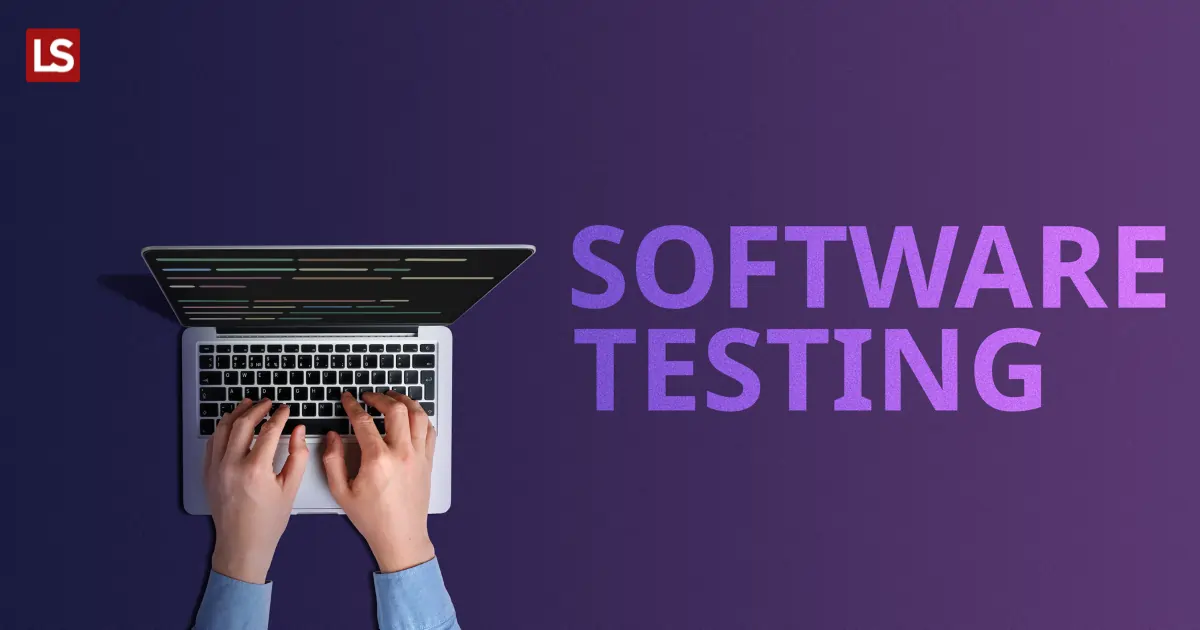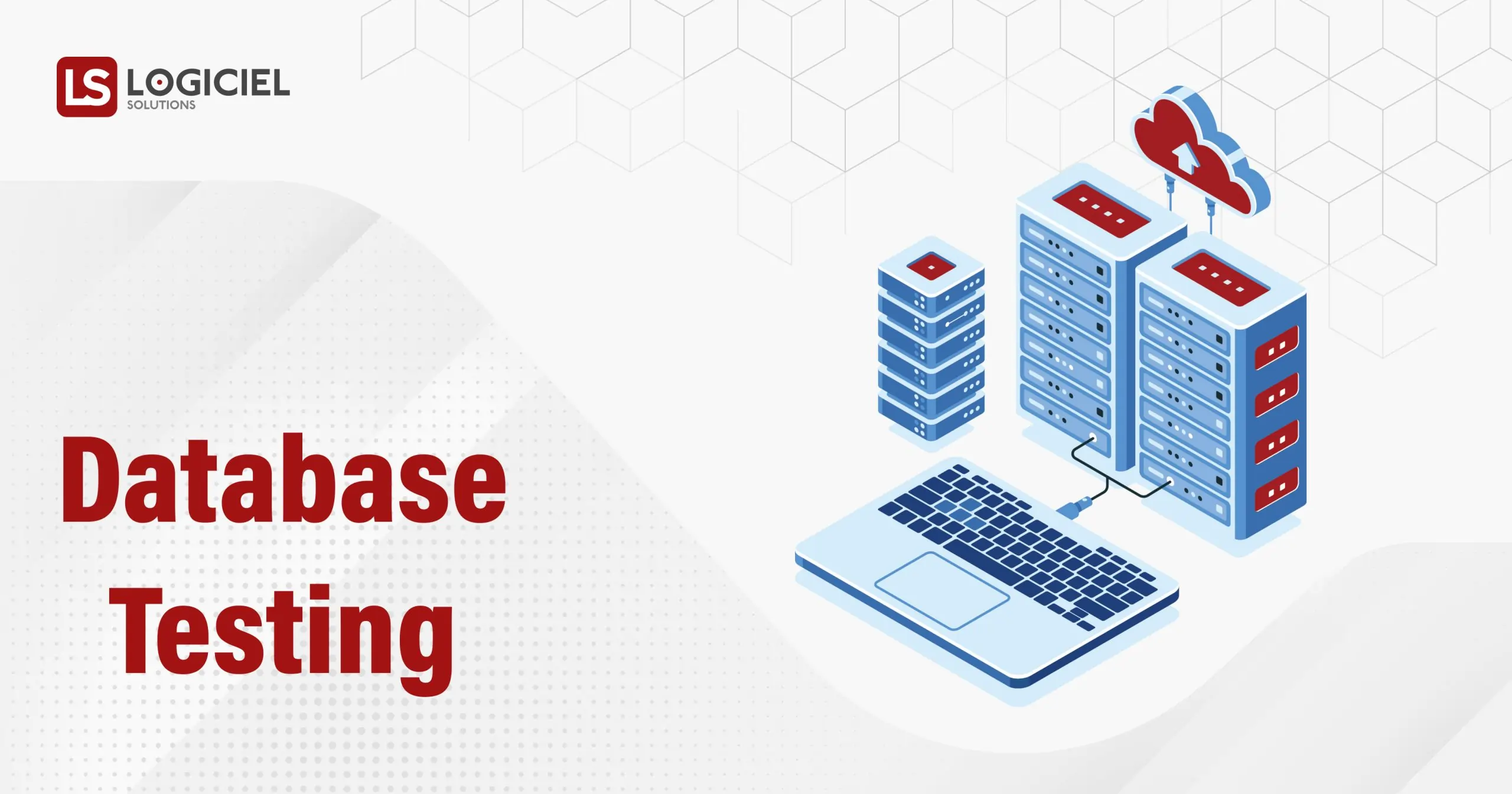What is Software Testing ?
In simple words, we can term Software Testing as a process of determining errors in a software product. Software testing also brings the team of developers and UX designers close to the Understanding requirements, and hurdles of the end-users. It tells them about the current defects, possibilities of breaches, crash issues if any, and the gap between the current and the expected results.
Software testing is among the most important segments of software development as it helps you to identify and fix the potential errors or challenges of the software that ultimately benefits its performance, security, scalability, and reliability. Identifying whether the final software application meets the expected needs of the client or business, software testing also ensures that the system is flawless and all the functionalities are up and running.
Businesses today couldn’t imagine their product launch cycle without testing because they have realized, a well-tested software product is equal to the best in quality software that ultimately ensures the best user experience and helps them save in the long run as potential bugs are fixed initially in the development phase. The procedures of good testing usually comprise evaluation, observation, analysis, examination, error finding, bug detecting, and working on other different aspects.
There are usually two major ways of testing. The first one is manual testing or can also be said as conventional testing. And the second one is automated testing which is done with the help of some modern tools.
Manual Testing Vs. Automated Testing
As the world is moving towards accelerated advancements, testing is also becoming an automated practice while making testing processes more efficient and quicker than manual testing. The same goes with the testing landscape as well. Here we are differentiating Manual and Automated Testing to give you a clear picture of the future scopes of both the testing practices:
| Manual Testing | Automated Testing |
|---|---|
| Tester generates a test result based on manual testing methods without using any automation tools. | The Automated Testing process is done with the help of tools and scripts. Those scripts contain information about the expected results and during the testing process, they compare the actual results with the expected ones. |
| It requires more effort and time. | It requires less effort and time. |
| The analysis of quality is performed by writing various scenarios related to the product into a Google Spreadsheet or Microsoft Excel. However, there are some quality analysis tools to maintain these records as well. | It requires subtle human intervention and observation whether it’s about generating an initial script or changing the existing one. It increases the speed and accuracy of the results under human supervision. |
Automation testing is more like an addition or extension to manual testing and can’t replace manual testing in any sense; however, seeing a surge in the demands of automation testing, we can say It is being used by more and more testers to make manual tests more efficient.
Categories of Software Testing
Basically, a software testing process is categorized into two major parts – Black Box Testing and White Box Testing. Let’s have a look at both of them:
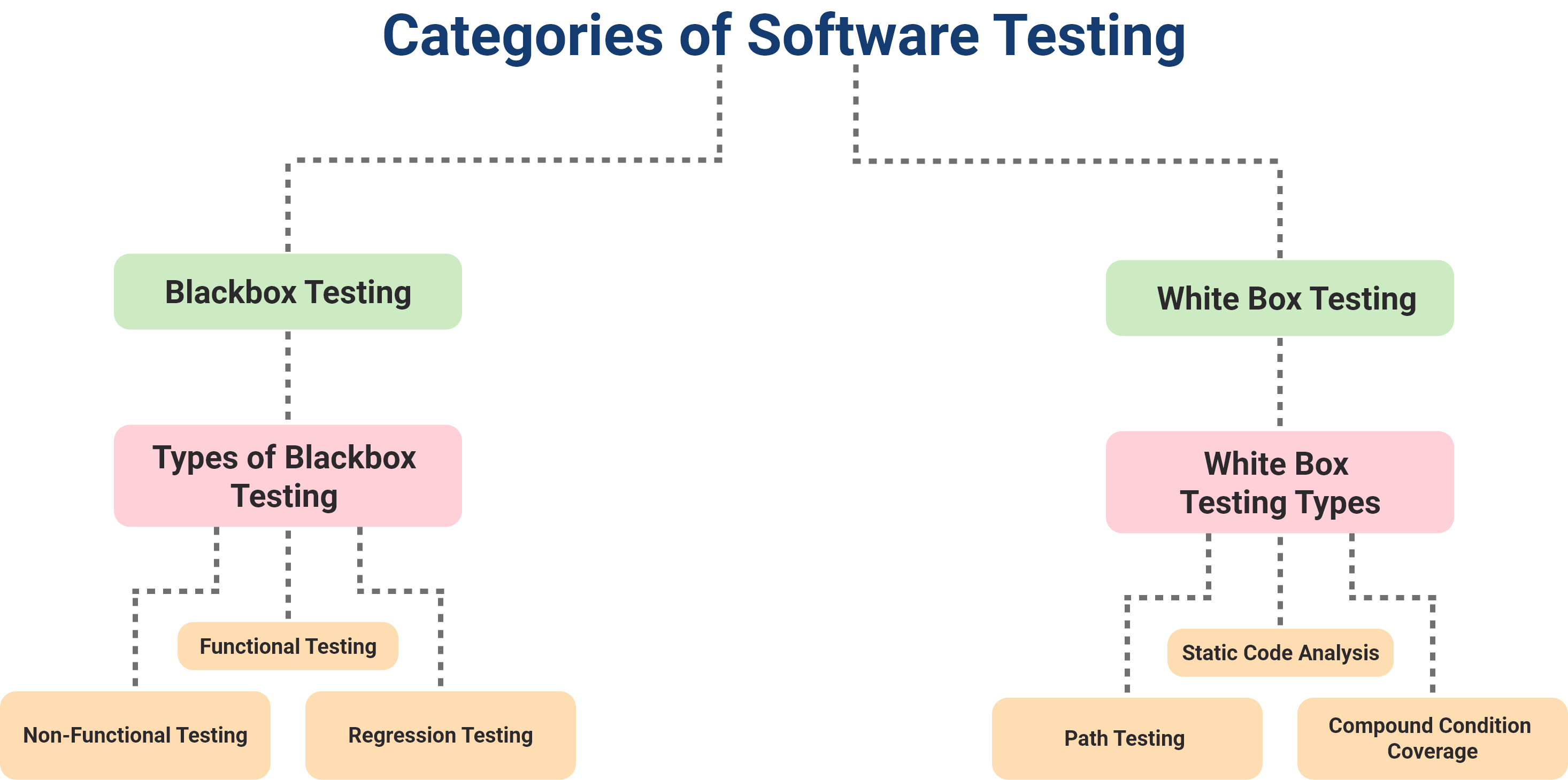
Blackbox Testing
It refers to a software testing method in which the testers don’t have any prior information about the internal code structure of the product like how it is actually architected or coded and they test it as end-users with the knowledge of expected behaviors and no knowledge of the product coding. It helps them determine how the software product will handle the expected and unexpected requests of the users. Mostly external resources are used to perform Blackbox testing.
Types of Blackbox Testing
Functional Testing
The process of verification of all the available functions in software falls into the functional testing category. A tester verifies each of the functions through a defined testing process. Based on the set of requirements the tester has, he/she focuses on testing the behavior of the application rather than finding bugs in the source code.
It has the ability to test some specific functional features of a system such as whether the login credentials used by the users are correct or not.
Some types of functional testing are :
- Unit Testing
- Integration Testing
- System Testing
Non-Functional Testing
This kind of testing covers different but crucial aspects regarding the software which include checking the performance, analyzing the usability, and testing the reliability of the same. Moreover, the ability of the system of handing a certain number of parallelly logged-in users is also checked in the non-functional testing.
Besides functional, Blackbox testing can also test the non-functional features of the software application such as how it will perform under expected traffic loads.
Some types of Non functional testing are :
- Performance Testing
- Load Testing
- Security Testing
- Usability Testing
Regression Testing
Regression testing ensures that the new update of the software has not affected the performance or functionality of the previously developed features of the software. It is usually performed to check the functionality of the existing features after a software application is updated with new features or coding practices. With regression testing, you can make sure that the new code changes are working fine with the old features and other parts of the software.
In more simple words, this testing determines the compatibility of the already developed version of the software with the new one.
White Box Testing
When a tester tests a software product with all the knowledge of the software coding, configuration, and other internal information, It is called white box testing. Enabling testers to test the internal functionalities of the software application, It lets them determine the data flaws, badly structured paths, security, and integration issues. White box testing is generally performed by the internal team of testers.
White Box Testing Types:
Static Code Analysis
It is an automatic and quick way to determine the coding errors in static code with the help of advanced techniques like machine learning analysis.
Path Testing
It is a great way to define and cover all the possible paths through code; however, one drawback of path testing is, It needs a lot of time to complete.
Compound Condition Coverage
This is a kind of white box testing where you can easily test multiple conditions with the help of multiple paths and a combination of several paths.
Software Testing Techniques and Why They are Used?
Software testing techniques comprise all the essential procedures that are performed to check the overall effectiveness, robustness, and quality of a given software or application. Their primary use is in designing insightful and comprehensible test cases. Test cases depict certain conditions that show, Is the system or software working according to the requirements? Although there are a number of testing techniques, the most commonly used ones are Boundary Value Analysis and Equivalence Class Partitioning.
Boundary Value Analysis (BVA)
A Boundary Value Analysis is used when a tester determines to find errors at the boundaries of input domains. It is a black box test design technique. The name boundary depicts that the tester doesn’t look at the centre of the input for errors. There are two kinds of boundaries – lower boundary and upper boundary.
Look at the given image to get a clear idea:
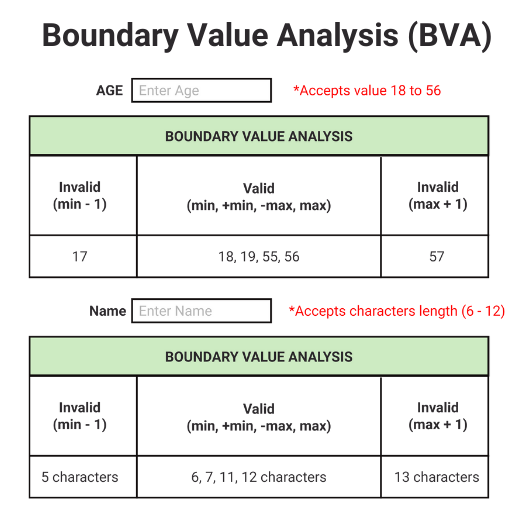
Equivalence Partitioning
In the Equivalence Partitioning method of testing, a tester looks for defining two different data classes for the input domain data he has received. Those data classes are ‘Valid’ and ‘Invalid’. This is a very clever technique to minimize the number of test cases to lessen the complication of the entire process.
Look at the given image to have a clear idea:
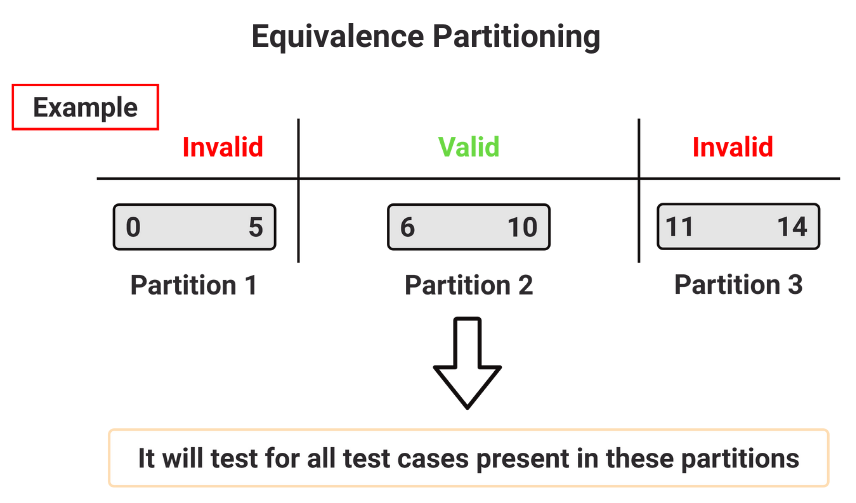
Software Testing Life Cycle (STLC)
The primary objective of any Software Testing Activity is to ensure that whether the software meets its goals or not. In order to make testing more robust and flawless, a Software Testing Life Cycle (STLC) is followed which includes multiple activities in a sequence. The main phases that fall under STLC are – requirement analysis, test planning, test case development, test environment setup, test execution, test cycle closure.
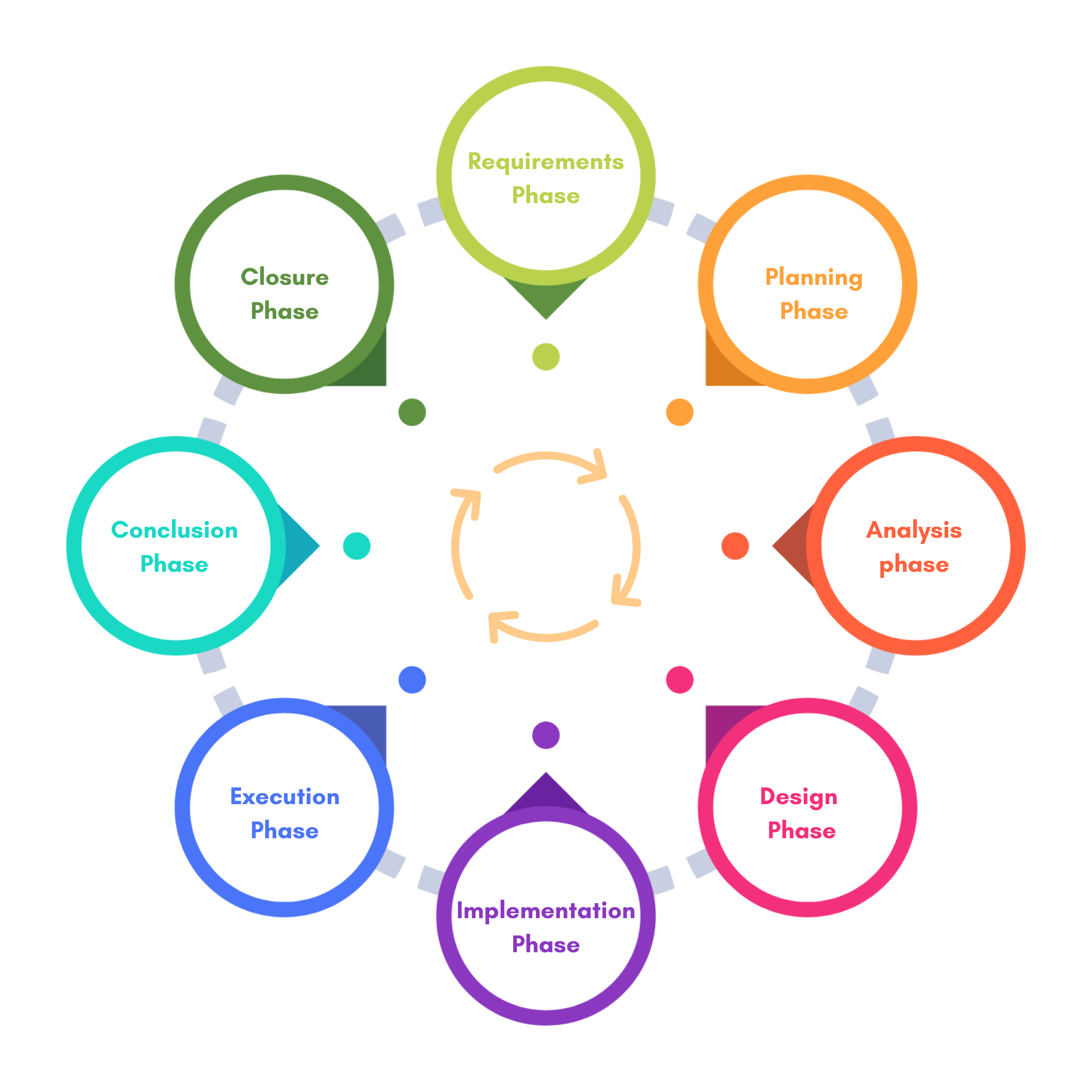
The 8 major phases of STLC are:
- Requirements Phase
In this very first phase of STLC, you collect, analyze and understand the actual requirements to determine the testing scopes. - Planning Phase
Once you determine the testing scopes, the next phase is identifying the required resources and suitable methodologies to perform testing. - Analysis phase
Here in this phase, you find out what needs to be tested including the test conditions and risks of the project. - Design Phase
This phase includes, how will you perform the test? From breaking down the test conditions to creating the test coverage metrics, It involves everything that you need to set up the test environment. - Implementation Phase
This phase is all about creating detailed test cases while prioritizing them all as per their importance. - Execution Phase
Here the actual execution of testing takes place. The execution phase includes executing the test cases, logging the defects and filling traceability metrics. - Conclusion Phase
In this segment, you need to create reports stating the number of test cases with their status including the number of mitigated risks. - Closure Phase
The closure phase ensures that all the test cases are executed properly and mitigated deliberately.


